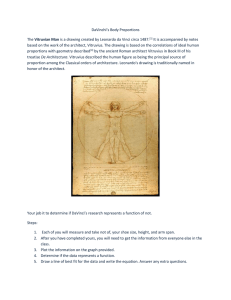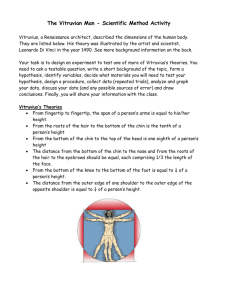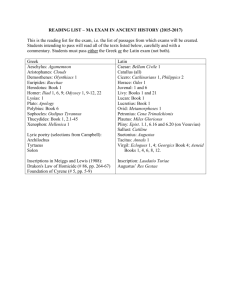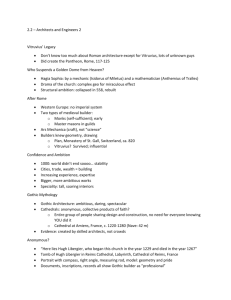4.607 Thinking About Architecture: In History and at Present
advertisement
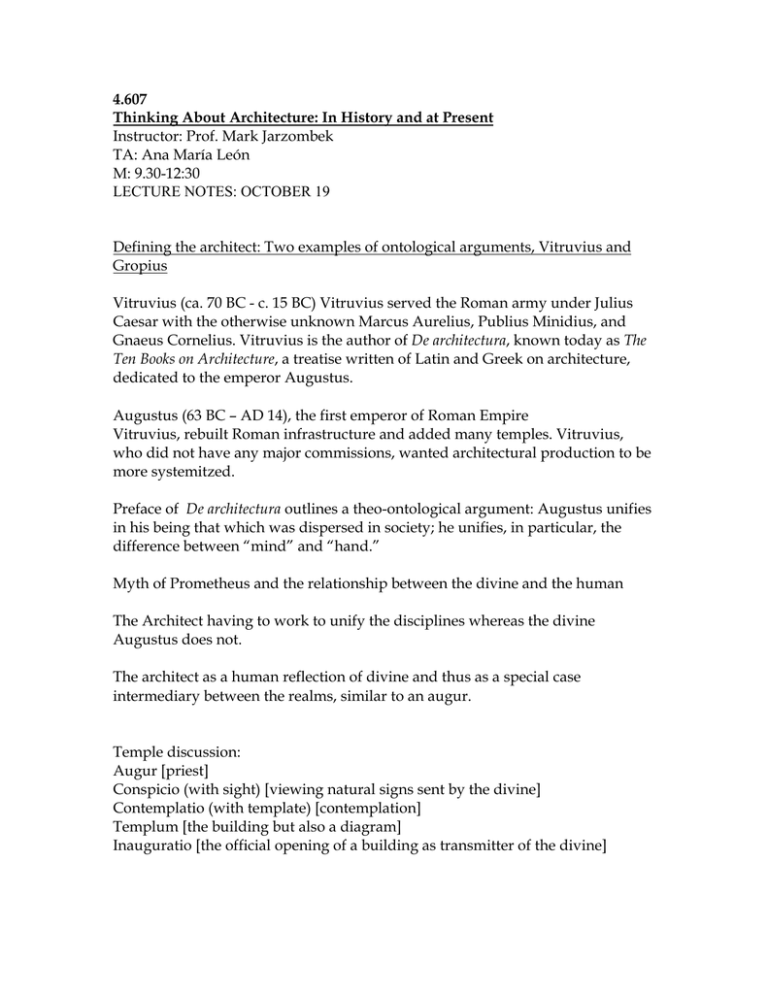
4.607 Thinking About Architecture: In History and at Present Instructor: Prof. Mark Jarzombek TA: Ana María León M: 9.30-12:30 LECTURE NOTES: OCTOBER 19 Defining the architect: Two examples of ontological arguments, Vitruvius and Gropius Vitruvius (ca. 70 BC - c. 15 BC) Vitruvius served the Roman army under Julius Caesar with the otherwise unknown Marcus Aurelius, Publius Minidius, and Gnaeus Cornelius. Vitruvius is the author of De architectura, known today as The Ten Books on Architecture, a treatise written of Latin and Greek on architecture, dedicated to the emperor Augustus. Augustus (63 BC – AD 14), the first emperor of Roman Empire Vitruvius, rebuilt Roman infrastructure and added many temples. Vitruvius, who did not have any major commissions, wanted architectural production to be more systemitzed. Preface of De architectura outlines a theo-ontological argument: Augustus unifies in his being that which was dispersed in society; he unifies, in particular, the difference between “mind” and “hand.” Myth of Prometheus and the relationship between the divine and the human The Architect having to work to unify the disciplines whereas the divine Augustus does not. The architect as a human reflection of divine and thus as a special case intermediary between the realms, similar to an augur. Temple discussion: Augur [priest] Conspicio (with sight) [viewing natural signs sent by the divine] Contemplatio (with template) [contemplation] Templum [the building but also a diagram] Inauguratio [the official opening of a building as transmitter of the divine] General Theme: Vitruvius DIVINE REALM Ontology Augustus = God MIND (mens) triumph (larger mental problem) obeyed guidance public dignity POWER (numen) victory (battlefield) courage free from fear common greatness HUMAN REALM The architect (theoretical) (practical) technology [temple] craftsmanship method struggle disciplines hands/ manual learn natural Walter Gropius (1883 -1969) was a German architect and founder of the Bauhaus School who, along with Ludwig Mies van der Rohe and Le Corbusier, is widely regarded as one of the pioneering masters of modern architecture. Scope of Total Architecture (1955) outlines the 12 points of architectural education. It is not a question of academic disciplines, but of the new Self in relationship to the World – a Self that accommodates the post-industrial age and the need to mobilize large realities. Gropius vision + competency industrial revolution education order vision understand distance scale distance world vision ego scale MIT OpenCourseWare http://ocw.mit.edu 4.607 Thinking About Architecture: In History and at Present Fall 2009 For information about citing these materials or our Terms of Use, visit: http://ocw.mit.edu/terms.
